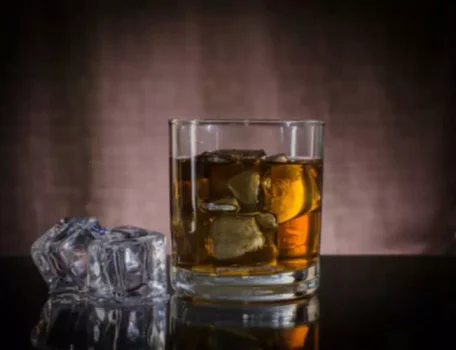
Currently, there are three medications approved for AUD in the United States, and they are an effective and important aid in the treatment of people with this condition. Professionally led treatments include behavioral treatments and medications. More and more people are sober curious, toying with the notion of drinking less.

Treatment for End-Stage Alcoholism
From there, they migrate into the airspace within the alveoli to the sites of microbial invasion. Once in the alveolar space, neutrophils ingest, degrade, and remove invading pathogens (Nathan 2006). This neutrophil-recruitment process is impaired by alcohol; sneezing after drinking alcohol even brief alcohol exposure decreases neutrophil recruitment to infected sites (Astry et al. 1983). Similarly, Boe and colleagues (2001) found that alcohol-exposed rats had decreased pulmonary neutrophil recruitment for up to 18 hours following S.
Persistent non-allergic rhinitis
- Steroid tablets have short-term risks, such as potentially causing insomnia (difficulty sleeping) and mood changes, which is why they are reserved for extreme cases not responding to other treatments.
- The consequence of prolonged exposure to alcohol was desensitization of the mucociliary apparatus, meaning that cilia could no longer be stimulated during stress, such as following aspiration of bacteria.
- This important study established that alcohol clearly impairs mucociliary clearance.
- The levels of GM-CSF are reduced in chronic alcohol-drinking mice (Joshi et al. 2005).
- The impact of alcohol on airway mucus represents an understudied area.
In a 2005 survey of nearly 12,000 people who experienced alcohol-induced nasal symptoms, red wine was more likely to cause symptoms than white wine. Persistent rhinitis typically causes sneezing and a blocked, itchy and runny nose. An allergy is a common cause but there are also non-allergic causes.
Alcohol use disorder
Tuberculosis infections but also infections by other bacterial pathogens, such as K. Pneumoniae induces time-dependent release of IL-12 from T cells, which in turn drives T cell IFN-γ production. This chain of reactions is disrupted by alcohol, because the levels of both IL-12 and IFN-γ were decreased in alcohol-exposed mice infected with K. These deficits could account for decreased clearance of these bacteria from the lungs. Clinicians and physiologists commonly believe that the alcohol present in exhaled air during alcohol consumption comes from alcohol that is vaporized from the alveolar-capillary interface of the pulmonary circulation. Careful studies by George and colleagues show that almost all of the exhaled alcohol is derived from the bronchial and not the pulmonary circulation (George et al., 1996).
You Spend a Lot of Time on Drinking

This hypothesis is further supported by an animal study that determined that aerosolized acetaldehyde but not ethanol induced histamine-mediated bronchoconstriction in guinea pigs (Myou et al., 1994). The first careful in vitro experiments that examined the effects of modest concentrations of alcohol on CBF in tracheal tissues were done in airway tissue from unanaesthetized sheep during fiberoptic bronchoscopy (Maurer and Liebman, 1988). This transient alcohol stimulation effect on cilia was recapitulated in vivo in alcohol-fed rats (Wyatt et al., 2004). In this model, 1 week of feeding 36% alcohol increased baseline CBF 40% over control animals and was comparable to stimulation with an exogenous beta agonist. These findings indicate that brief exposure to alcohol stimulated ciliary motility both in vitro and in vivo.
- Failure of this system results in recurrent bronchitis, pneumonia and airway deformity in the form of bronchiectasis (Noone et al., 2004).
- This can also lead to anemia, when your red blood cell (RBC) count is lower than normal or there’s a problem with the hemoglobin protein inside those cells.
- This may be due to alcohol’s effect on the brain, sleep, and anti-seizure medications.
- «The males tended to like the look of the beers, whereas the female participants really liked some of the more colourful cocktail drinks.
- Alcoholic liver disease is treatable if it is caught before it causes severe damage.
Changes in airflow were measured following the ingestion of different concentrations of pure ethanol (diluted in water) in 5 normal subjects and 5 patients with asthma (Ayres et al., 1982). Two of the normal subjects and 3 of the asthmatic patients had a slight decrease in specific airways conductance with 20% alcohol within 5 minutes of quickly swallowing the whole drink. Higher concentrations of alcohol (60%), when sipped slowly over 5 minutes, resulted in significant increases in airway conductance in 4 of 5 of the asthmatics. This study suggests that while alcohol can immediately trigger an initial small upper airway irritant response, a separate slow bronchodilator effect can be observed in asthmatics. For example, oral GSH treatment in alcohol-drinking mice was able to restore GSH pools, reverse alcohol-induced Nox increases, and restore alveolar macrophage function (Yeligar et al. 2012, 2014). These results suggest that GSH is a vital component in restoring alcohol-induced alveolar macrophage function by decreasing Nox proteins and restoring GSH pools.
International Patients
In this manner, the epithelium of the conducting airways is continually exposed to ethanol during alcohol ingestion. Although TB is treatable with antibiotics, the prevalence of multidrug-resistant tuberculosis (MDRTB) is on the rise and has been reported worldwide (WHO 2014). One of the main factors increasing the prevalence of MDRTB is noncompliance by patients who do not complete their normal 6-month treatment regimen, leading to the emergence of drug-resistant M. A recent study of MDRTB in South Africa reports that of 225 patients diagnosed with MDRTB, only 50 percent were cured or completed treatment. Treatment default rates were highest among alcohol users (Kendall et al. 2013). Other countries also report similar TB treatment defaults in individuals with AUD, resulting in poorer treatment outcomes and increased mortality rates (Bumburidi et al. 2006; Jakubowiak et al. 2007).
Unprovoked seizures that occur more than 48 hours after a person’s last drink may be due to another cause, such as head injury or withdrawal from other drugs. When people stop consuming alcohol after chronic use, they lose the inhibitory effects of the GABA receptors, resulting in the central nervous system being overstimulated. «We found a positive association between poor sleep and increased level of anxiety and alcohol use, and the more anxiety individuals had, the more they engaged in alcohol use and coping motives for alcohol use,» Armstrong said. Don’t feel bad, but do consider cutting back on drinking — or quitting altogether.

CDC will offer seasonal flu shots to farmworkers to lower bird flu risk
However, once symptoms have gone, the dose of a steroid spray can often be reduced to a low maintenance dose each day to keep symptoms away. There are several types that you can buy at pharmacies, or get on prescription. Side-effects or problems with steroid nasal sprays are rare (read the packet leaflet for details). A steroid nasal spray such as beclometasone usually works well to clear all the nasal symptoms (itch, sneezing, watering and congestion).